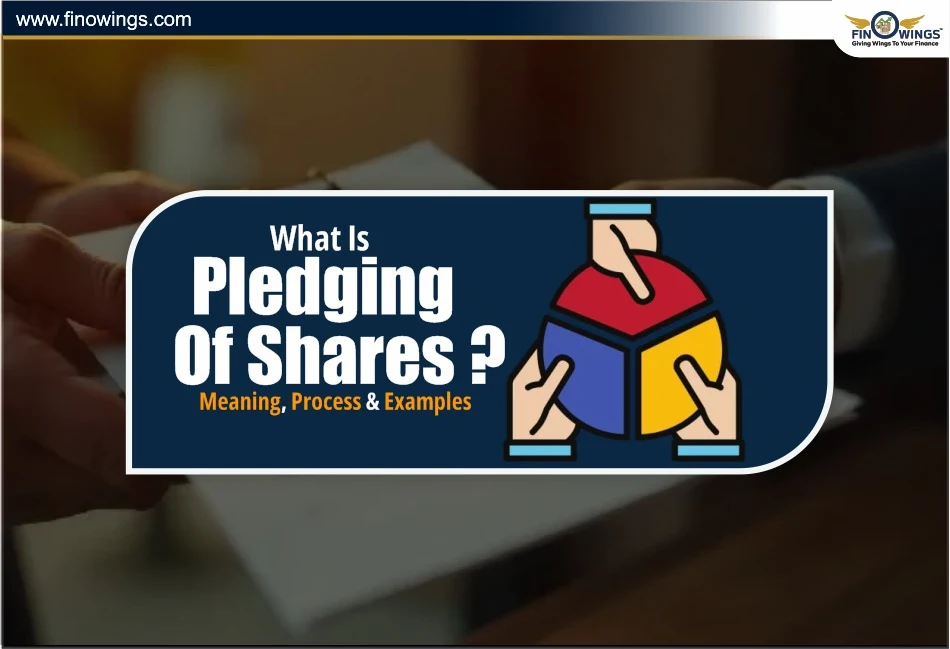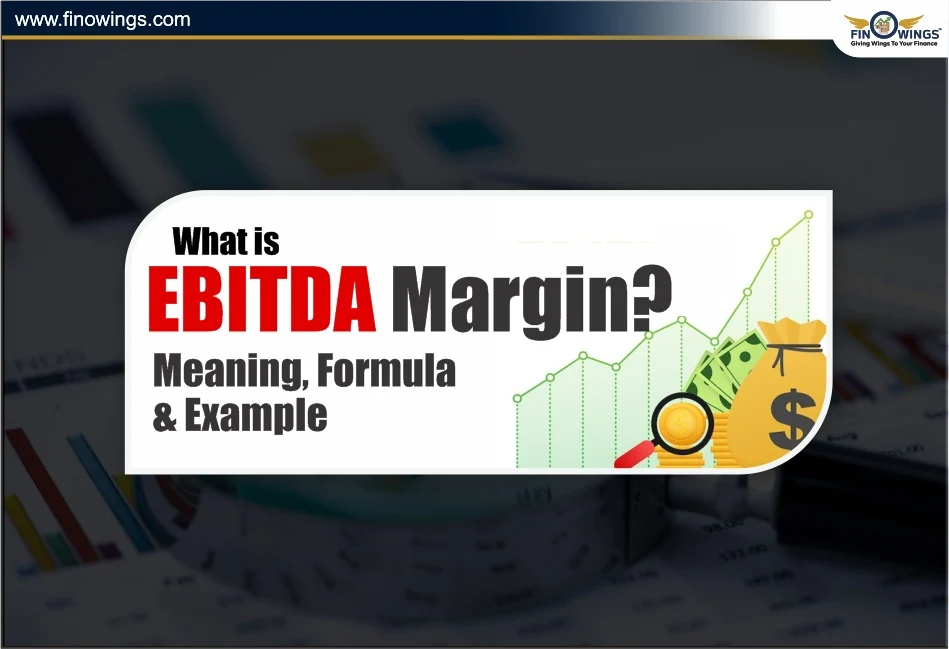Home >> Blog >> What Is Pledging of Shares? Meaning, Process & Examples
What Is Pledging of Shares? Meaning, Process & Examples

Table of Contents
- What Is Pledging of Shares? Meaning, Process & Examples
- Pledged Shares Meaning (Pledged Holdings Meaning)
- Why Do Shareholders or Investors Pledge Shares?
- What Is Promoter Pledging?
- Understanding Stock Pledging for Retail Investors
- Understanding Share Pledge Process
- Real-Life Example of Pledged Shares
- Impact of Promoter Pledging on Shareholders
- Is Pledging Of Shares Good Or Bad?
- How to Check Pledged Holdings in a Company
- Risks of Pledging Shares
- Conclusion
What Is Pledging of Shares? Meaning, Process & Examples
To someone new to the stock market, the term “pledging shares” sounds important, as in shares are collateral for a loan. When news articles mention “high promoter pledging,” it sounds risky, but what is pledged shares? Is it pledging of shares good or bad? How does it affect an investor?
Pledged Shares Meaning (Pledged Holdings Meaning)
To pledge shares, means to use stock holding as collateral to borrow a loan, which means a bank or a lending institution can provide a loan. Think of it as pledging gold while applying for a loan.
The shares stay in the Demat account but with a loan default warning. collateral blocked, or requested closed. So, pledged shares are simply the shares an investor or promoter has for a loan.
Why Do Shareholders or Investors Pledge Shares?
Shareholders or investors have various reasons for using a share pledge.
1. Requirements in Business – Promoters may pledge shares to expand a business, pay business debts, or refinance working capital.
2. Perhaps Borrowing for Personal Use – In some cases, promoters or large shareholders take loans for personal or other business investment.
3. Avoid Selling Equity – Promoters can take loans against their shares to obtain financing while retaining their position in the company with no dilution.
What Is Promoter Pledging?
Promoter pledging describes the scenario in which the company’s promoters use their own shares as collateral for loans (usually to banks, NBFCs, or other financial institutions).
e.g if the promoters of a company own 60% of its shares and pledge 20% of that holding, a third of the collateralised loan is backed by shares.
Gradable for investors, substantial promoter pledging indicates the promoters of a business may not have the cash flow necessary to operate the business. If a loan goes unpaid, the lenders have the right to sell the shares, which can cause the stock price to drop substantially.
Understanding Stock Pledging for Retail Investors
Promoters aren't the only ones who can pledge stocks. Even retail investors can do this too!
Consider using a margin facility. When you trade in the stock market and use a margin facility, your stockbroker can offer you lower-tier margin stock.
This is considered stock pledging and margin pledging. Your shares in the margin tier would be as collateral positioned for you to take on intraday, futures & options (F&O) trading and other riskier trading.
Understanding Share Pledge Process
Understanding the pledged shares concept is vital. Here is a list that helps the process mechanism:
1. Initiate a Pledge.
This is the first contact point is with a lender (bank or broker) who is covering a loan on stock.
2. Approve or Deny the Loan.
In this case, the stock value and LTV (loan to value) ratio are calculated to be more than the market value for the stock and loan.
3. Marking the Pledge
After the loan approval, the borrower’s shares are marked as pledged. The borrower may be prevented from selling the shares until the loan is settled or the lender permits it.
4. Loan Repayment and Release
When the borrower fully repays the loan and the interest on the loan, the lender will remove the pledge. The shares will become unpledged and can be traded again.
5. Default Scenario
One situation is that the borrower may not repay the loan. In such a case, the pledged shares may be legally sold in the open market by the lender to recoup the loan.
Real-Life Example of Pledged Shares
Let’s consider a straightforward example.
Mr. A has shares of XYZ Ltd. valued at ₹1 crore. He pledges those shares to take a loan of ₹50 lakh from a bank. The bank then updates Mr. A's Demat account to indicate that the shares are pledged. After Mr. A pays off his loan, the shares are unpledged for his use. If he fails to pay the loan, the bank will recover its loan by selling the pledged shares.
Impact of Promoter Pledging on Shareholders
The increase in pledging by promoters may be a reason for investors to refrain from purchase.
Let’s break it down:
-
When promoters take out loans against their shares, if they default, lenders can sell their shares leading to a steep decline in stock price.
-
If too many shares are pledged, promoters can lose control because lenders can sell their shares.
-
Stakeholders view high pledging negatively because it suggests a company is struggling with liquidity or excessive debt.
-
High pledged shares lead to greater volatility, with extreme reactions to any operational or financial news.
However, it is important to remember, not all pledging is detrimental.
Is Pledging Of Shares Good Or Bad?
It all depends on the why and how much.
Pledging is positive when:-
-
Shares are pledged to facilitate company growth or restructure company debt.
-
The company’s cash flow and repayment history are robust.
-
The promoters are only pledging a small fraction of their shares.
Pledging is negative when:-
-
Over 40-50% of the promoters' shares are pledged.
-
The company is struggling or heavily leveraged.
-
The promoters are using pledged shares to fund high-risk projects or cover operational losses.
So, is the pledging of shares good or bad? It all depends on context - moderate, strategic pledging is normal; excessive pledging is a red flag.
How to Check Pledged Holdings in a Company
Investors can verify pledged holdings' meaning and levels through:
-
Quarterly Shareholding Pattern (SHP) on NSE/BSE websites.
-
Company annual reports or investor presentations.
-
Financial portals like Moneycontrol, Trendlyne, or Screener.
Just focus on the “Promoter Pledge (%)” column. Anything above 25-30% requires deeper examination.
Risks of Pledging Shares
1. Market Crash Risk - If share prices fall, lenders could request more collateral (a margin call).
2. Forced Selling - Pledged shares can be sold off and panic the market.
3. Ownership Dilution - Promoters may lose considerable control over the company.
4. Interest Burden - The cost of borrowing affects net profitability.
Key Takeaways
What is stock pledging? Shares are collateral for loans.
What is promoter pledging? Company promoters pledge their shares for personal or business loans.
Conclusion
Share pledging can be an effective tool - it allows an entity to obtain liquidity without losing control over its shares. That said, an entity that over-pledges is likely to be in financial distress. For retail investors, knowing the meaning of pledged shares and monitoring promoter pledging can help avoid financially risky stocks.
A good company whose promoters have high pledging used is deserving of extra vigilance. A poor company whose promoters have high pledging used is a company to avoid.
The true value of a stock also determines whether pledging is acceptable or dangerous. Read our comprehensive tutorial on the Intrinsic Value of Stock or Share to learn how to determine a company's fair value before making an investment. It discusses how to determine a stock's true value beyond market hype.
DISCLAIMER: This blog is NOT any buy or sell recommendation. No investment or trading advice is given. The content is purely for educational and information purposes only. Always consult your eligible financial advisor for investment-related decisions.



















